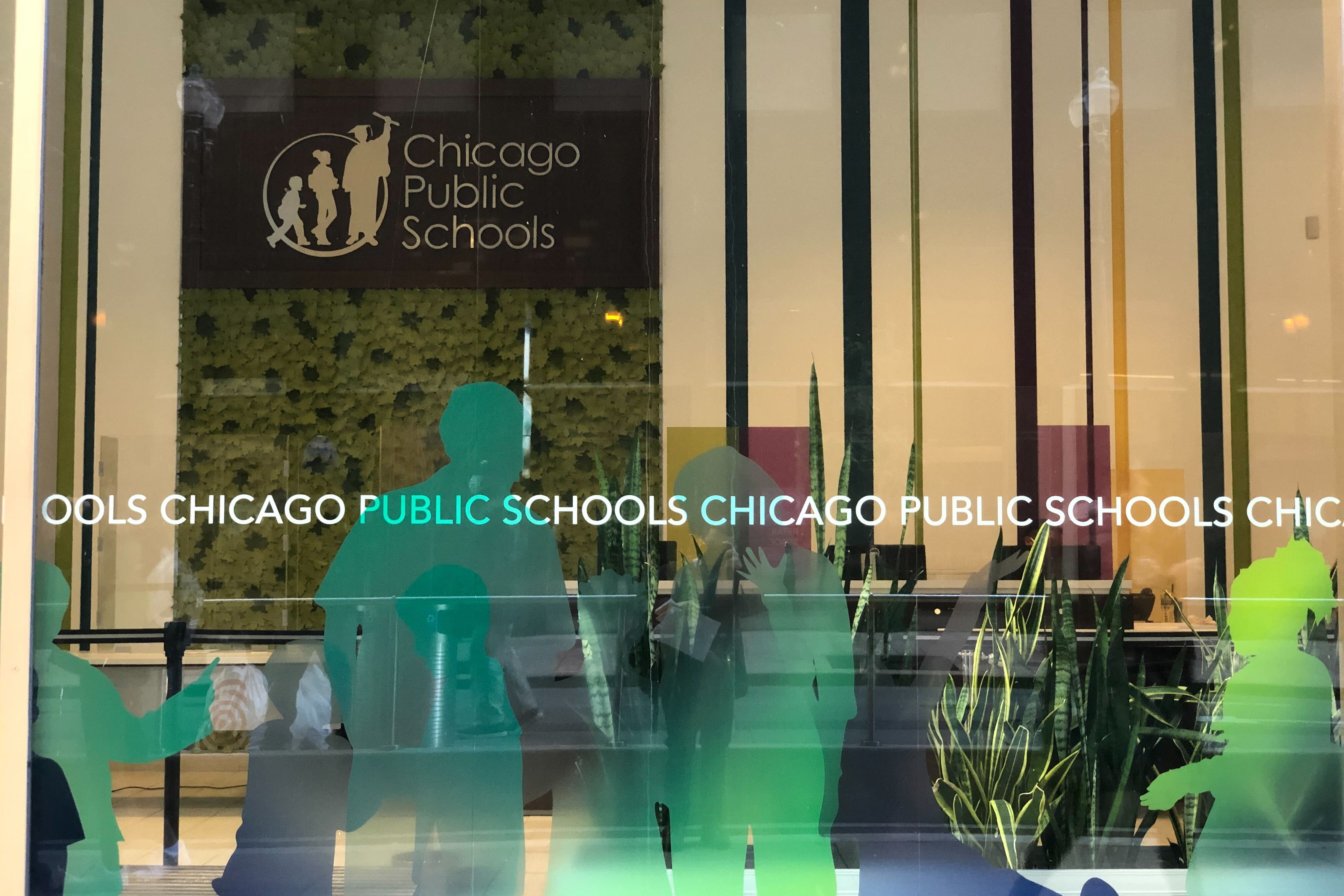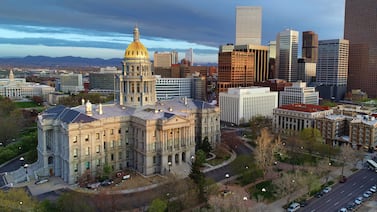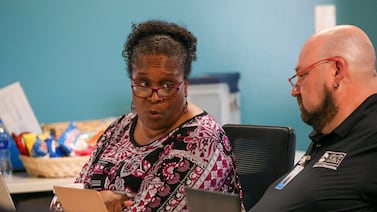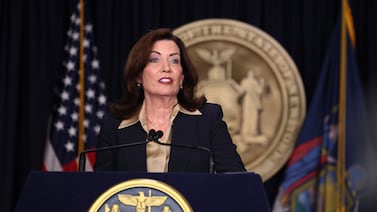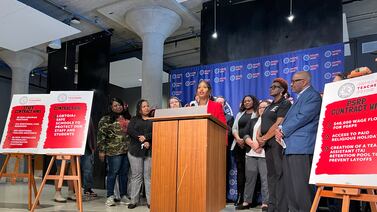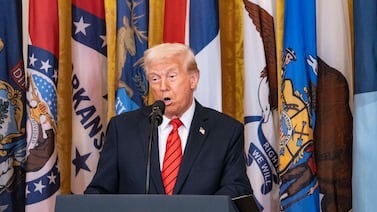Chicago voters will soon see a new office on their ballots: school board.
In November 2024, voters will elect 10 members to the Chicago Board of Education as the city moves to a 21-member school board that will eventually be fully elected.
The transition marks a dramatic change for Chicago Public Schools, which has been under mayoral control since 1995. Before that, school board members were seated through a nomination process.
The law — and its subsequent trailer bill — spells out a number of rules, regulations, and processes that have to be followed before Chicagoans are voting in school board elections every two years.
Here’s a closer look at some of the details – and outstanding questions.
How will the Chicago Board of Education change?
According to the school board’s website, it is “responsible for the governance, organizational and financial oversight of Chicago Public Schools.” Its mission statement promises “to set goals and standards and make policies that make a high quality public education system available to the children of Chicago.”
Currently, seven people are appointed by the mayor. They can step down or be replaced at virtually any time. Under mayoral control, the school board has been criticized by some as a rubber stamp that made decisions behind closed doors.
Advocates who lobbied for the elected school board wanted to change that and after many years of lobbying, lawmakers passed a law in 2021 to transition to an elected school board. That law expands the size of the board from seven members to 21. For two years starting in January 2025, the board will be a mix of elected and appointed members. By January 2027, it will be fully elected.
At that point, the school board will resemble Chicago’s current City Council — except instead of 50 aldermen elected from 50 wards and one mayor elected by all of Chicago, there will be 20 members elected from 20 different districts and one school board president elected at-large.
When and how will school board members be elected?
The first Chicago school board elections will be held Nov. 5, 2024. Ten members will be elected from 10 yet-to-be-determined districts representing different areas of the city. Those members will each serve a four-year term and will be up for re-election in 2028.
By Dec. 16, 2024, Mayor Brandon Johnson must also appoint 10 members from those same 10 districts to serve two-year terms. The 10 mayoral-appointed seats will switch to being elected to four-year terms in November 2026. Those seats will represent different districts at that point and will be up for re-election in 2030.
The mayor will also appoint a school board president by Dec. 16, 2024 from anywhere in the city to serve for two years starting in 2024. In Nov. 2026, all Chicago voters will elect a school board president at-large. That person will also be up for re-election in 2030.
In all, 21 new school board members — half elected, half appointed — will be sworn into office in January 2025. By January 2027, all 21 members will have been elected. From that point on, school board elections will be staggered, with half the seats up for reelection every two years.
Who can — and cannot — run for the elected school board?
Chicagoans who want to run to represent their community on the school board will have to collect 250 signatures from voters who also live in their district. Candidates for school board president will have to collect 2,500 signatures from registered Chicago voters.
Similar to other elected offices, candidates will have to submit those petitions to the Chicago Board of Elections a few months before the election in order to get on the ballot and could face challenges to the validity of their signatures. However, the threshold is far lower than other offices, like mayor, which requires 12,500 valid signatures to get on the ballot.
The dates for when school board candidates can start collecting signatures to get on the November 2024 ballot are not set yet, according to spokespeople with both the city and state Board of Elections.
A number of Chicagoans won’t be able to serve on the school board, according to the legislation.
School board members cannot be employees of Chicago Public Schools or employees or owners of companies that hold contracts with the school district. It is not clear, however, if a candidate could run and then resign from those jobs in order to serve. Like other school boards across Illinois, members also cannot hold other elected offices.
One point of contention that has come up during public hearings is that non-citizens are not allowed to vote in school board elections or run for office. This disqualifies many public school parents in Chicago and is a departure from a separate state law that allows non-citizens to vote in and serve on Local School Councils, which oversee budget and leadership decisions at individual schools. The law does call for the creation of a non-citizen advisory board appointed by the mayor, but it does not spell out what powers or responsibilities that group would have.
How will my school or community be represented?
This is perhaps the most critical — and most up-in-the-air question. The short answer is: No one knows yet.
State lawmakers from both the House and Senate have been hosting public hearings to gather feedback on how they should divide the city into districts from which school board members will be elected. The next hearing will be held virtually on Friday, May 5.
The law states “the City of Chicago shall be subdivided into 10 electoral districts for the 2024 elections and into 20 electoral districts for the 2026 elections.”
It’s not clear if lawmakers plan to draw both a 10-district map and a 20-district map by the statutorily required July 1 deadline.
State Sen. Kimberly Lightford, who represents parts of Chicago’s West Side and a handful of near western suburbs and is chairing the senate’s Special Committee on the Chicago Elected Representative School Board, said the group is evaluating input from the public, including “proposals that suggest a map with 10 districts, and submissions that call for 20 districts.”
State Rep. Ann Williams, who represents parts of Chicago’s north side and chairs a working group of House Democrats focused on Chicago’s elected school board maps, said the number of districts drawn in the next two months is still “to be determined.”
Like all electoral maps, the elected school board districts have to be “compact, contiguous, and substantially equal in population and consistent with the Illinois Voting Rights Act.”
Several groups are already advocating for representation and have proposed maps, including Illinois African Americans for Equitable Redistricting, Asian Americans Advancing Justice, and Kids First Chicago.
Becky Vevea is the bureau chief for Chalkbeat Chicago. Contact Becky at bvevea@chalkbeat.org.

